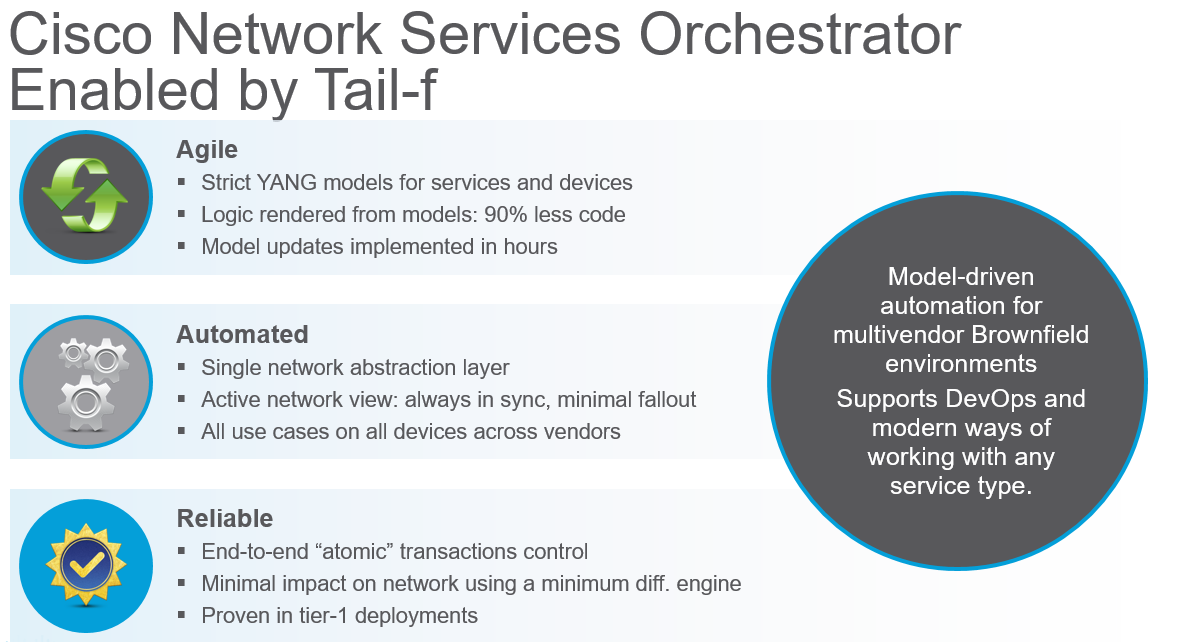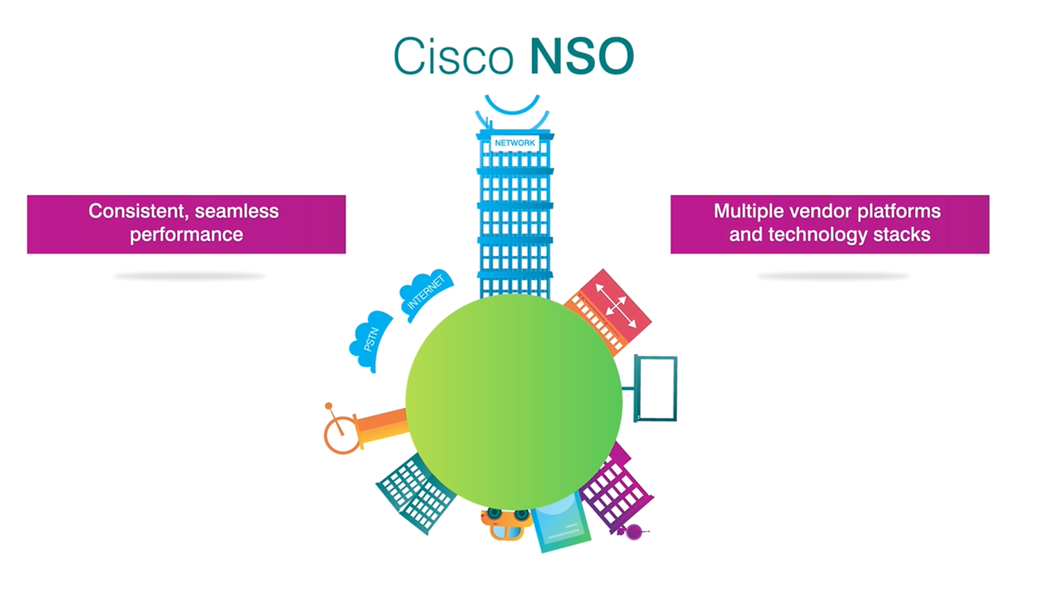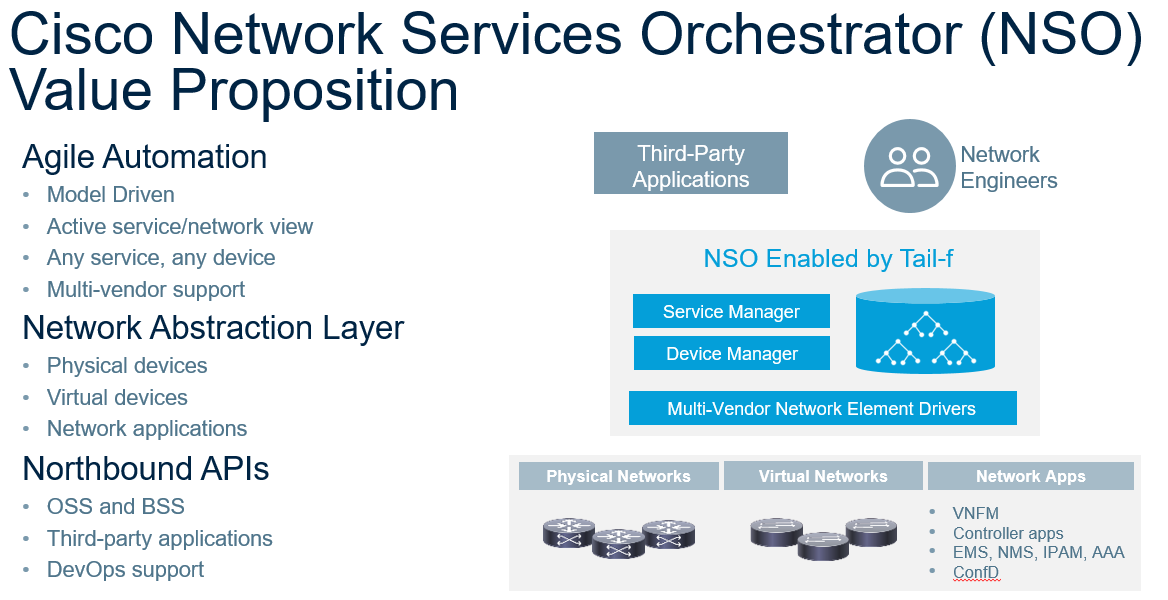For cloud service providers, the market landscape can look like an ocean of new opportunities—or an obstacle course with one difficult challenge after another. Both perspectives are legitimate: Network services have never been more in demand, and cloud providers who capitalize can unlock major new revenue streams. But customer expectations have never been higher. They want custom services tailored just for their business, and they want them now, not six months from now. If a cloud provider can’t answer a new market need fast enough, a competitor surely will.
The only way to gain the necessary speed is through network automation. But traditionally, the more network functions were automated, the less flexibility a service provider had to change them. That’s because traditional automation relies on hardcoded functions that require extensive custom development efforts, complex operational overhead, and long lead times. Add to this the challenges inherent in most service provider networks—underlying network equipment from multiple vendors, hybrid environments with both physical and virtual resources—and the challenge only grows.
Fortunately, cloud service providers don’t have to choose between speed and flexibility. With the Cisco Network Services Orchestrator (NSO) enabled by Tail-f, they can have both.

Automate Across the Service Lifecycle
Cisco NSO provides full lifecycle service automation to provision, manage, and assure services end-to-end across hybrid networks. It provides a streamlined abstraction layer that lets cloud service providers model services at a high level in the standardized YANG modeling language, and have the network automatically execute them. Effectively, cloud providers can say, “This customer needs a service that does X.” Cisco NSO then looks at the real-time status of the network (across both physical and virtual network elements from practically any vendor) and makes it happen—without operators having to spell out every step along the way.
Best of all, Cisco NSO does this across the entire service lifecycle—designing a new service, provisioning, making changes to services or the underlying network, and even activation testing and ongoing monitoring and assurance. So cloud service providers get the speed of automated carrier-class services, and the agility to make changes as fast as new opportunities arise.

Cisco NSO in Action
These capabilities may sound like something out of an interesting lab experiment. But leading cloud service providers around the globe are using them right now in real-world networks, and gaining real competitive advantage.
- Telefonica’s network serves 320 million customers across 130 countries. The company is using Cisco NSO to move from time-consuming manual workflow-based processes to automated service provisioning. They’ve reduced manual provisioning steps by up to 90 percent and can now deliver new services in minutes instead of months.
- Level 3 uses Cisco NSO to power network-as-a-service (NaaS) solutions for customers worldwide. The platform abstracts away the complexity of different multivendor networks in different markets, so the company can use the same service models across multiple continents—more than 75,000 network devices in all. Customers can access the same suite of automated self-service network solutions, with the same scalability and high availability, anywhere, regardless of underlying infrastructure.
- Equinix provides interconnection and data center services for thousands of customers across 15 countries. They used NSO to support their new Cloud Exchange offer, which securely links customers with a wide range of cloud service providers. With Cisco NSO, they can now provision and activate new services in one tenth the time. And they were able to build and launch the new offering—from procurement to live production—in just 90 days.
- Softbank is letting customers design their own smart VPN solutions, selecting from a range of multivendor network devices through a self-service portal. Cisco NSO automates service provisioning across both physical and virtual network elements. And Softbank has reduced deployment times for new enterprise services from weeks to minutes.
- Telstra uses Cisco NSO to automate both provisioning and assurance of IP network services for its business customers. Instead of relying on manual processes and physical network probes, they can deploy “virtual” probes as part of every new service as part of the same service model that handles provisioning. They’re assuring carrier-class services to meet service-level agreements (SLAs) with a fraction of the time and effort.

Learn More
Ready to find out what Cisco NSO can do for your business? Watch the video above to learn more.
Or, for a deeper dive, check out the Cisco Knowledge Network webinar “The Four Pillars of Orchestration: Making End-to-End Service Automation a Reality in Dynamic Networks.” You can watch it live on September 7, or view the recording here.

Excellent detailed information. Certainly, the only way to gain the necessary speed is through network automation. And sure Cisco NSO offer this without any doubt, availability, agility, optimization, quality and reliability of services with real automation. Great video, with a simple and clear presentation. Thank you for sharing it.
Thank You. Good Video. I am trying to apply whatever I can comprehend from your technological developments to education in educationally emerging economies.